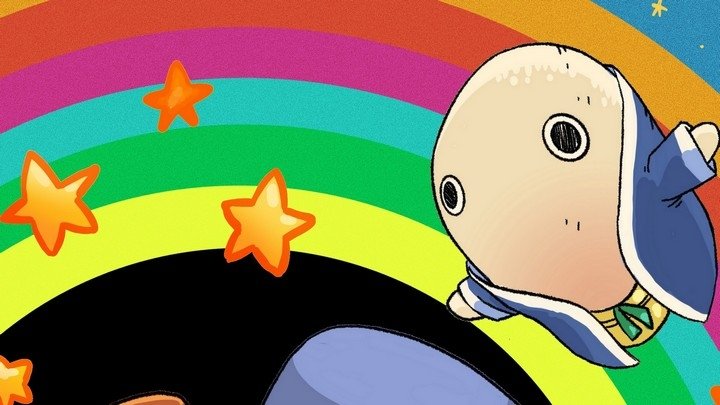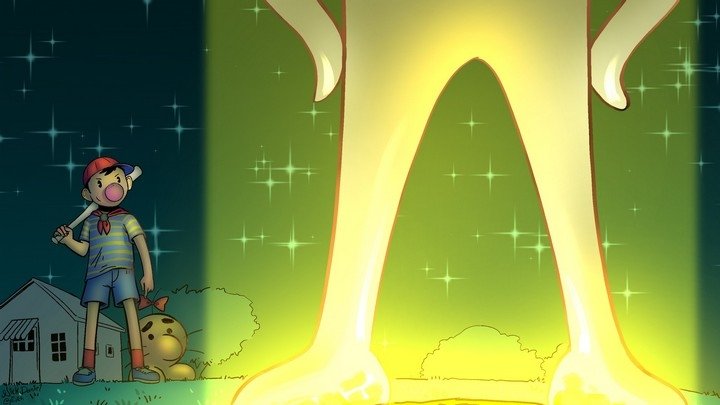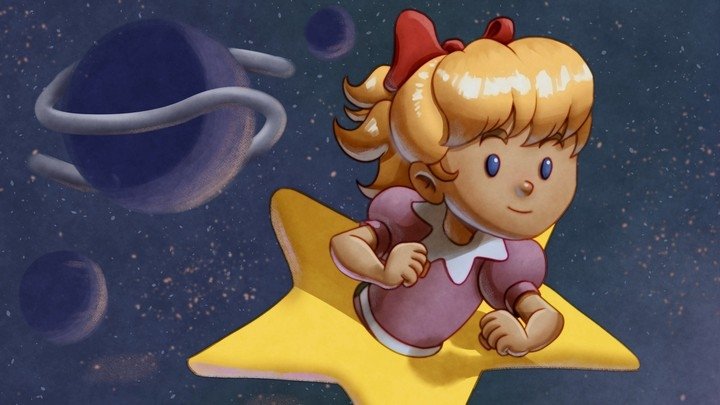Eternal Champions: honoring the video game consoles with the longest lifespan
When it comes to consoles, it's not game over until the new releases stop.
We live in a world of "planned obsolescence" where most human beings carry fantastically advanced, wafer-thin computers in their pockets that are more than capable of performing calculations for the rest of their users' mortal lives, yet we replace these machines every 2-3 years for incremental upgrades or a new color shell that wasn't available before. In this light it is fascinating to consider the lifespan of those devices we once fretted and even fought over in the past: video game consoles.
As with modern smartphones, most video game consoles are made of stern stuff and, barring a spilled root beer or direct impact from Mjölnir, should continue to function adequately for decades to come. Yet we continue to think of consoles having a "lifespan" based not their circuits breaking down but on how long corporations continue to produce new software for that hardware. Japanese blog Famicom no Neta compiled a list of which consoles had the longest "life" by subtracting the console's release date from the date of the most recent software release. The longest-lived console as determined by these criteria will likely surprise most video game fans!
(Before we identify Top Ten Longest Lived Consoles Of All Time, large caveats apply to these figures as they are entirely based on Japanese releases and ignore unlicensed fan-made works which can extend the life of a console many times over)
10. Dreamcast (8 years, 103 days)
Despite its legacy overseas as a game machine that was ahead of its time which died too soon, Japanese publishers continued to support Sega's final console until 2007, making it outlast all other Sega machines (the Mega Drive came in right behind Dreamcast on Famicom no Neta's list at 7 years, 146 days). The last release in Japan was Karous, a vertical shooter that was later ported to the 3DS (unlike the Dreamcast version, this one was released internationally). By contrast, the last Dreamcast game overseas was NHL 2K2 released in...2K2.
9. Wii (8 years, 151 days)
Nintendo's hugely successful motion-controlled hail-mary burned brighter and hotter in the US than it did in Japan where it fizzled out after only 8.5 years, the last official release being a 2015 expansion for Dragon Quest X. Outside Japan, however, Just Dance 2019 was released for the original Wii on October 23, 2018, extending the Wii's life to almost a dozen years. That still wouldn't be enough to catapult it atop this list though.
8. PlayStation 1 (9 years, 164 days)
Sony's first console was a huge hit in every major territory but in Japan it was a massive success with a library of thousands of games, dwarfing all of its contemporaries. Japanese publishers supported it until 2004 but in Europe, the last PlayStation game came out on March 1, 2005, a mini-game collection called Schnappi: 3 Fun-Games. For the record, Sony did not officially discontinue the console itself until 2006 - the same year the PlayStation 3 launched.
7. Xbox 360 (9 years, 345 days)
The biggest surprise on this list, hands down. Microsoft's Xbox brand has performed dismally in Japan, yet the 360 managed to last almost a decade thanks to Monster Hunter Frontier, an expansion of which proved to be the final 360 release in 2015 (For the record, the Xbox One wasn't available in Japan until 2014; it landed with a thud). Outside Japan, where the 360 was a hit, the console continues to have life thanks to releases like - you guessed it - Just Dance 2019 last fall, putting the Xbox 360 at nearly 13 years old (which is still not enough to top this list!).
6. Super Famicom (10 years, 11 days)
Nintendo's sophomore console famously launched in Japan with no AC adapter, assuming consumers would just use the Famicom adapter they likely already owned. It had a good run in Japan, surviving the entirety of the 90s before seeing its last game in the year 2000. That final release was Metal Slader Glory: Director's Cut, an upgraded re-release of a Famicom game from 1991. Overseas, no nation saw a new SNES title later than 1998, with the final U.S. release being a port of Frogger.
5. PC Engine with CD-ROM (10 years, 183 days)
While NEC's PC Engine first launched in Japan back in 1987, it wasn't until the following year that the console got its own CD-ROM drive. That combination system would prove a lucrative one in Japan as it lasted over a decade, long outliving its supposed successors the SuperGrafx or PC-FX. The final Japanese release was Dead of the Brain 1&2, a phenomenally titled horror adventure game compilation. Meanwhile in the US, we got the renamed TurboGrafx-16 in 1989 where it never quite took off and saw its last game, Magical Chase, in 1993.
4. Famicom (10 years, 347 days)
Nintendo's first video game console needs no introduction for Retronauts readers. The Famicom had a two-year head start before coming to America as the Nintendo Entertainment System, so by the time Wario's Woods hit shelves in 1994, it was nearly eleven years after the Japanese launch. Comparatively, the NES only lived for 9 years and 54 days, with Wario's Woods also being the final title. European NES fans, those lucky few, got their last game in 1995: The Lion King.
Break out the rare earth medals, we've reached the Top 3:
3. PlayStation 3 (11 years, 324 days*)
This one comes with a big asterisk attached: the PlayStation 3 launched in 2006 and even though the PlayStation 4 is already five years old as of this writing, there are still PlayStation 3 games being released as recently as last fall. No, not Just Dance 2019, but FIFA 19. So even though Sony has officially discontinued the console and will soon stop offering PlayStation 3 (and Vita, sigh) games to PlayStation Plus users, the console doesn't seem quite dead yet.
Vita, on the other hand, seems unlikely to reach its eighth birthday this year.
2. PlayStation 2 (13 years, 26 days)
Sony's sophomore console was a crossover success the likes of which we're unlikely to see again, riding the wave of PlayStation 1 via backwards compatibility while also harnessing the power of the burgeoning DVD market. Add in the fact that the expensive PlayStation 3 initially struggled to compete with the Wii and many publishers (especially in Japan) stuck with the PlayStation 2 for a long time after HD gaming was in vogue. In fact, the PlayStation 2 saw new releases as late as 2013 (FIFA 14 and Pro Evolution Soccer 2014), the same year the PlayStation 4 launched in most territories (Sony Japan waited until 2014).
Is anyone else amazed that the PlayStation 3 and PlayStation 2 ended up in third and second place, respectively? No?? Well here's the winner, the absolute gold standard for video game machines:
1. NEO GEO (14 years, 169 days)
As a former Neo Geo owner allow me to be smug: I am not surprised by this fact. The Neo Geo home console (dubbed the "AES" to contrast it from the "MVS" arcade cabinet, though the software for both was nearly identical) debuted in 1990 where it towered over its 8/16-bit peers. That didn't translate to retail success, however, where the massive machine and its massive cartridges sported massive price tags that kept them out of the 90's console wars for all but the nichest of niche consumers. Years later, after I scored a used AES on eBay, I can recall exploiting my status as a Software Etc employee in 1997 by requesting the company's remaining stock be sent to my store so I could grab brand-new $200 MSRP cartridges for just $5 apiece. But SNK persevered by catering to the connoisseur crowd via direct sales and continued to produce original cartridges until 2004, years after the company had ceased manufacturing the original Neo Geo hardware as well its would-be successor, the Neo Geo CD system. That last game, depending on where you lived, was called Samurai Spirits Zero Special or Samurai Shodown V Special (it's the same game). And even as the Neo Geo and its original library came to an end, ports of Neo Geo games continue to be available on consoles and home computers (and mini-consoles) to this day.
The full list of 27 different machines is available in Japanese on the Famicom no Neta website. For curious parties who cannot read katakana, the absolute shortest-lived console by these calculations was the Virtual Boy which only "lived" for 154 days before its final games were released on December 22, 1995. Even if we include the North American exclusive 3D Tetris (released March 22 1996), that's not enough for the Virtual Boy to escape the cellar and overtake the second-shortest-lived console, Sega's 32X. Why, a historian could easily do a video series on every single Virtual Boy release ever and complete the console's library in no time at all.
Header image courtesy of Wikipedia Commons



